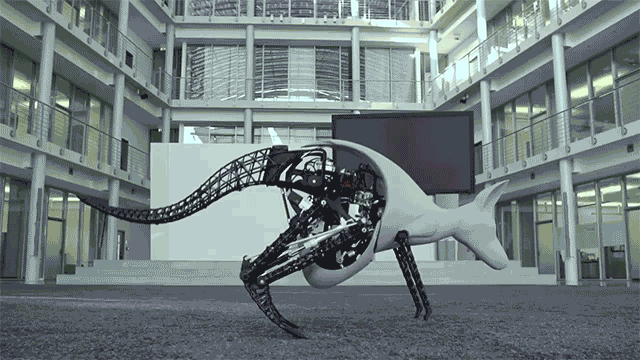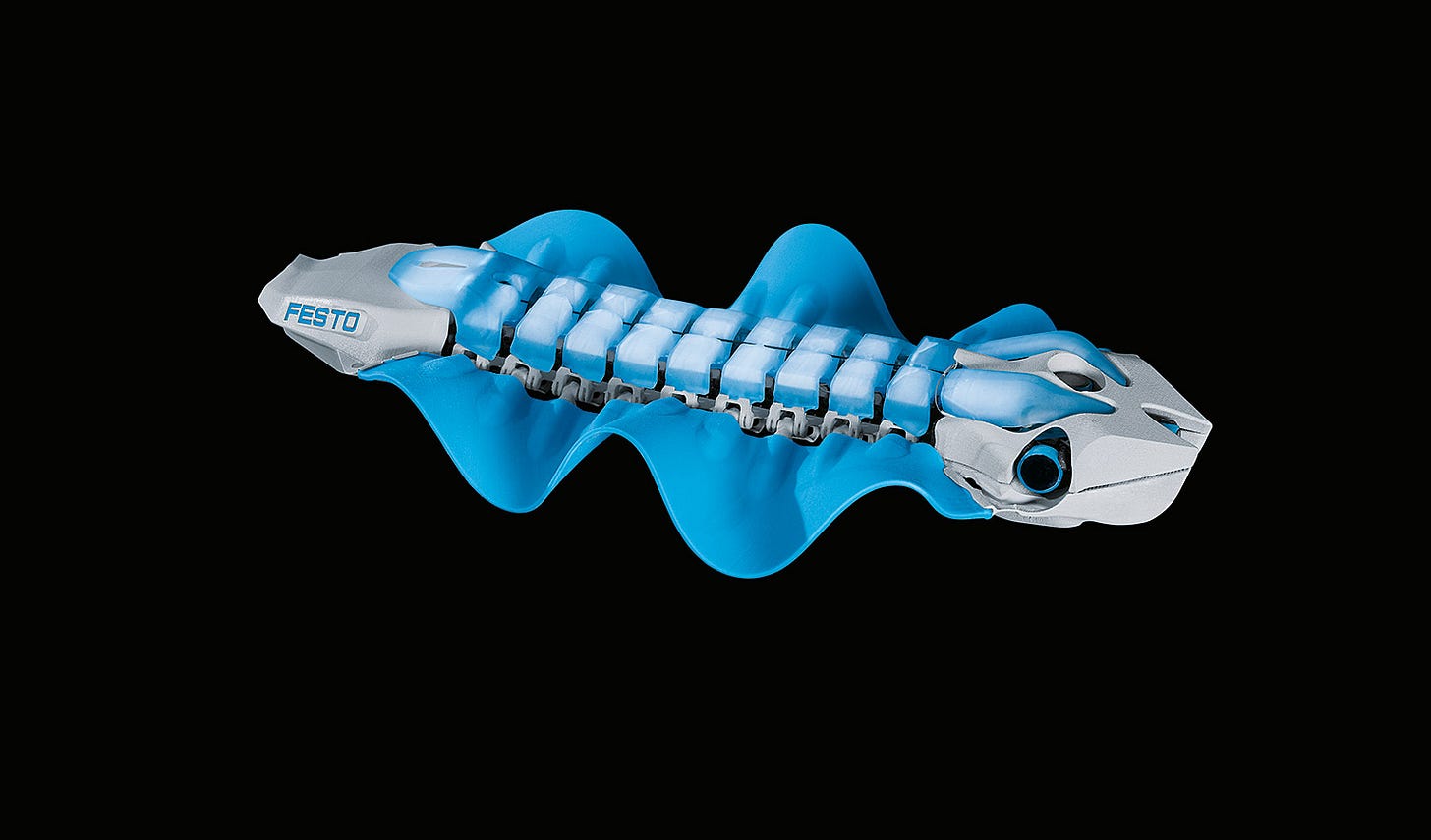This week we will look at some robotic animals that are part of a Global Electronics Company’s work in developing future manufacturing systems. We will also watch 100 year old films upscaled for better viewing and discover a new way for robots to navigate in unfamiliar environments. Finally what do Einstein, Elvis and Black Holes have in common? We will find out.
A Bionic Bird
Festo is a family owned company based in Esslingen, Germany which supplies pneumatic and electrical automation technology. They spend 8% of revenue each year on R&D. In 2011 they released the first version of their Smart Bird. The Smart Bird is a bionic flying bird capable of flight under its’ own power. It weighs 450 grams and has a wingspan of 1.96 meters.

They have since gone on to develop a smart Joey.

Why develop these gadgets? Apart from the novelty value, the learning contributes to Festo’s main business, the development of future manufacturing systems. This includes development of Bionic Hands (full description here) and Arms for robotics, systems that transfer hovering objects using superconductors (contactless transport to eliminate contamination) and other bionic animals including the Finwave.
The Finwave is an autonomous robot that navigates underwater whilst communicating with the outside world. It is made from silicon and uses two side fins to move. The Finwave mimics the natural swimming maneuvers of the cuttlefish and the Nile perch. It can wirelessly communicate data and can be used in water and sewerage systems for measurement and data collection. It is an example of taking real world systems into soft robotics and adapting them for use in manufacturing and monitoring.

Upscaling Old Video
We have all seen film shot 100 plus years ago. It is jumpy, black and white and full of blotches and marks.

Technology is now bringing those old films back to life in higher quality. The screen shot above is from 1906 and shows a trip down Market St. in San Francisco. The film was shot 4 days before the 1906 earthquake that destroyed much of San Francisco.
Denis Shiryaev, a Polish Engineer (his site is here) used Dain for Frame Interpolation and ESRGAN for Image resolution (both free algorithms) and then removed excess noise and colorized the film. Here is a screen shot from the upscaled film.

Here is the full video upscaled. This is the Goggle Street View of the street today.

Learning to Navigate with Active Neural SLAM
How do computers learn to navigate through a city, house or other space. One way used by Self Drive Cars is to map every single road or space and constantly update that map so that the Car can navigate its’ way to its’ destination. This is expensive and very time consuming. It can work for routes that don’t change very often such as roads but it is impractical for navigating through a changing landscape, like rooms in a house.
We need better ways to teach the computer/robot to navigate. If we drop an autonomous robot into an unknown space there is a need to explore and map the space as quickly as possible to allow efficient maneuvering through the space. The robot needs to know 3 things, where it has been before, where it is now and where it needs to go.
To know where it has been the robot requires a memory and a map, knowing where it is now requires a current state estimation and deciding where to go next requires planning. Active Neural Slam solves this by using Structured Spacial representation, hierarchal policies and analytical planners to learn to explore in large environments.

Here is a demonstration of the active neural slam model in a typical home. The observations of the home are shown on the left and the model predictions are shown on the right.

The robot is able to predict the map fairly accurately and it can learn to explore in unseen environments easily. The team developing the Active Neural SLAM method won the 2019 Habitat Navigation Challenge.
The sound of merging Black Holes
The physicists at LIGO (Laser Interferometer Gravitational-Wave Observatory) have spent the past few years discovering Gravitational waves and proving the Einstein was correct with his predictions of General Relativity. Gravitational waves are disruptions in the fabric of space that travel across the universe in the form of a wave. They are very very small and it takes very specialized equipment to find them.
Gravitational waves were first identified passing through our planet in 2015. They are formed by the merging of 2 black holes in space. The merging or crashing together of black holes is so violent it disrupts the very fabric of space and a wave is sent across the universe. Most black holes that merge are of very similar size. However in April 2019 an unusual black hole merger was detected from 2.4 billion light years away. This was a merger of a black hole 30 solar masses in size and one of 8 solar masses (a single solar mass is equivalent to about 330,000 earths). The first such merger detected here on earth.
Two equal sized black holes merging will send out waves concentrated at a single frequency. Einstein predicted that if black holes with distinctly different masses merged they would also generate waves at higher frequencies (or overtones). This is what happened, if the first wave was a C on a piano the overtone would be the next higher G (known as a perfect 5th). Low and behold that is also the first two notes in Elvis Presley’s hit “I can’t help falling in love with you”.
Science has not only proven Einstein correct again, it has also proven that Elvis was sent to us by Aliens from a planet in the process of being consumed by merging black holes 2.4billion years ago. Elvis has always been with us and he has never left us.
Paying it Forward
If you have a start-up or know of a start-up that has a product ready for market please let me know. I would be happy to have a look and feature the startup in this newsletter. Also if any startups need introductions please get in touch and I will help where I can.
If you have any questions or comments please email me via my website craigcarlyon.com or comment below.
I would also appreciate it if you could forward this newsletter to anyone that you think might be interested.


